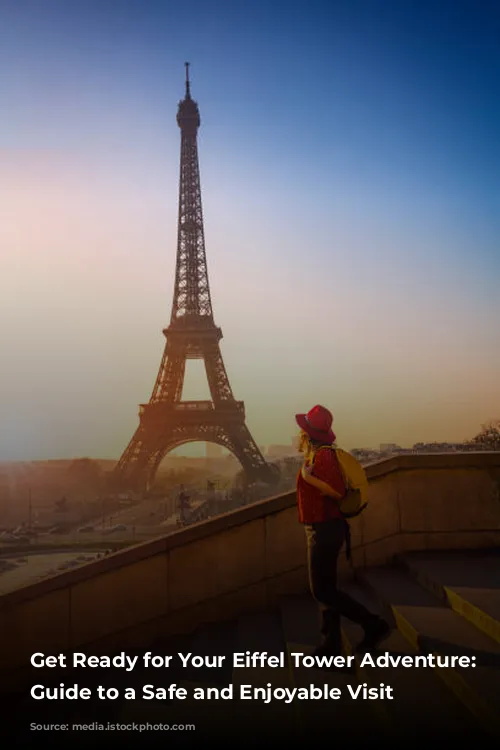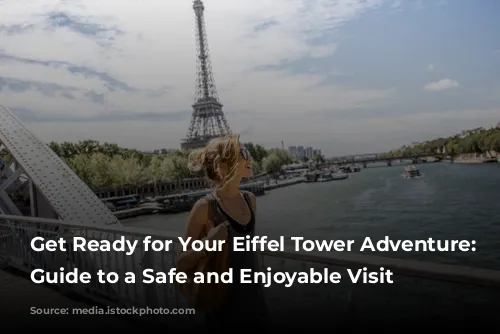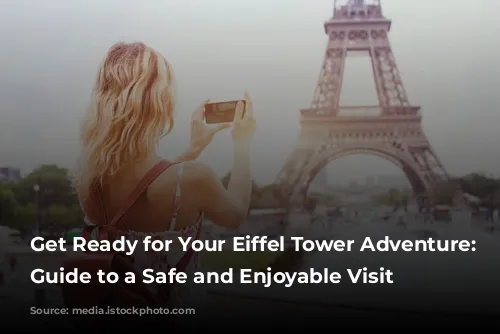Ready to ascend the iconic Eiffel Tower? This guide will help you navigate the security procedures and etiquette to ensure a stress-free and memorable experience. These tips are based on the official visit regulations, which you can find here.

Security Measures: Keeping Everyone Safe
The Eiffel Tower, like all public facilities in France, prioritizes safety. This means a rigorous security system is in place, aligned with the national “Vigipirate” plan. Every visitor, whether you have pre-booked tickets or purchased them on-site, must pass through two security checkpoints. The first is at the entrance to the Eiffel Tower grounds, and the second is before accessing the elevator or stairs.

Prohibited Items: What to Leave Behind
For safety reasons, certain items are strictly forbidden within the Eiffel Tower. This includes anything that could potentially harm people, the structure, or the monument. Please carefully review the contents of your bags. Avoid bringing items like Swiss army knives, as these are considered weapons and will not be allowed.
Remember, our security team cannot make exceptions or store prohibited items. For a complete list of banned items, please refer to Articles 16, 23, 24, and 25 of the visit regulations.

Luggage and Personal Transport: Plan Ahead
Many visitors want to maximize their time in Paris, but be aware that large luggage is not permitted inside the Eiffel Tower. There are no luggage lockers or storage facilities available. A luggage sizer is provided at security checkpoints, indicating the maximum allowed size. We recommend storing luggage at your hotel or a train station locker before visiting.
Family fun at the Eiffel Tower is encouraged, but remember, only folding strollers are allowed. Non-folding strollers, scooters, and bicycles are not permitted due to their size. Rollerblades or roller skates must be stored in a bag and cannot be used during your visit.

Be Mindful of Your Belongings: Safety First
It’s crucial to never leave bags or strollers unattended. This is especially important in the current security climate. An abandoned bag could trigger an evacuation, security lockdown, or even the involvement of bomb disposal services. Be mindful and keep your belongings close at hand.
Lost something? If you’re still at the tower and know the location, report it to a member of the reception team or the Information desk. If you realize you’ve lost something after your visit, access the “Lost Property” service [link to service].

Photography and Safety: A Balancing Act
The views from the Eiffel Tower are breathtaking, and you’ll be tempted to capture them with your smartphone or camera. However, never reach your device over railings or gates to take photos. This is extremely dangerous as the phone or selfie stick could fall, causing harm to people below. Please inform your children and teenagers of the importance of this safety rule.

Fear of Heights: A Smooth Visit for Everyone
If you have a fear of heights, it’s best to skip the top level of the Eiffel Tower. The climb from the second floor can be challenging for those with acrophobia. Consider purchasing tickets for the first and second floors, which offer equally impressive views and a more enjoyable experience.

Additional Resources: Plan Your Visit with Confidence
For further questions or information, please review our visit regulations and frequently asked questions. [link to regulations and FAQs]
We hope you have a safe and memorable visit to the Eiffel Tower!






